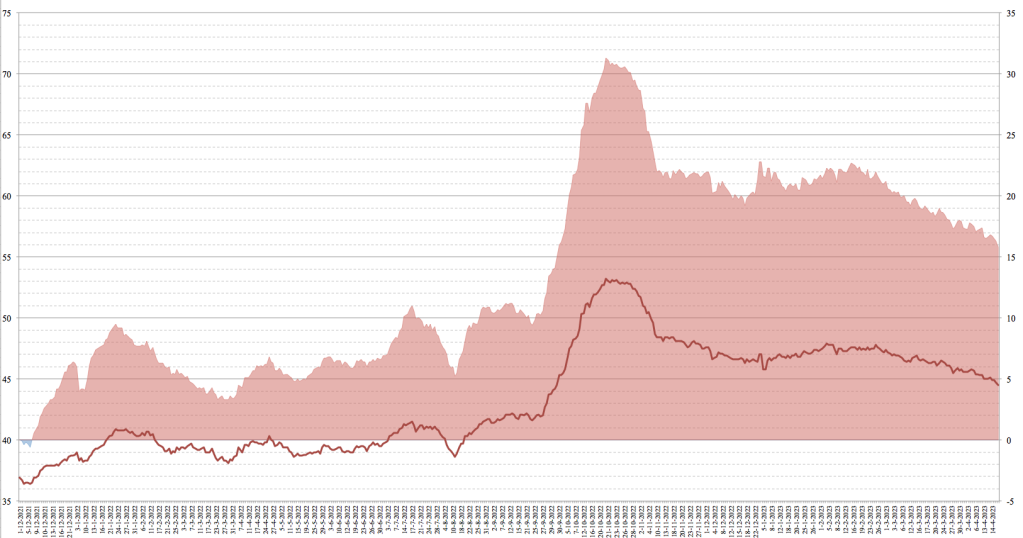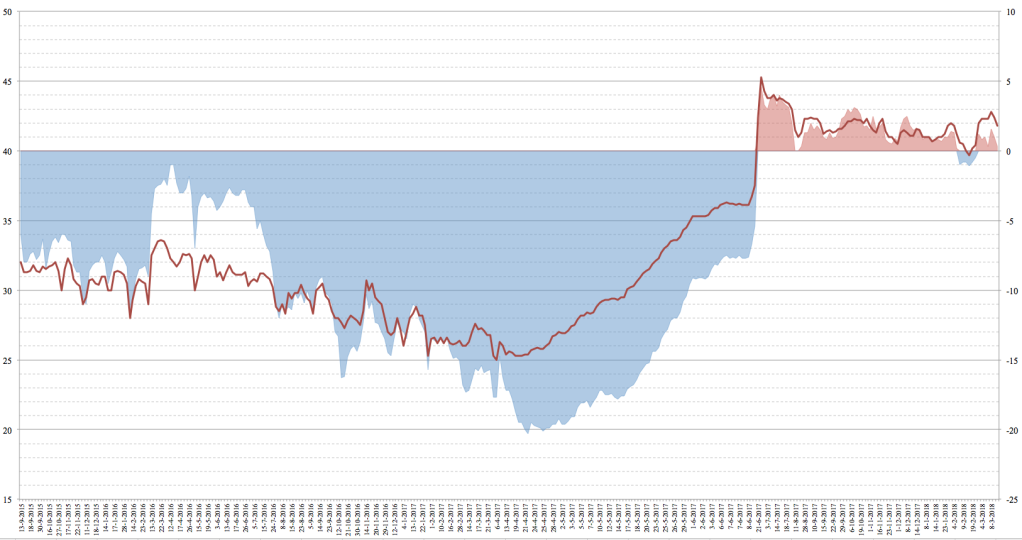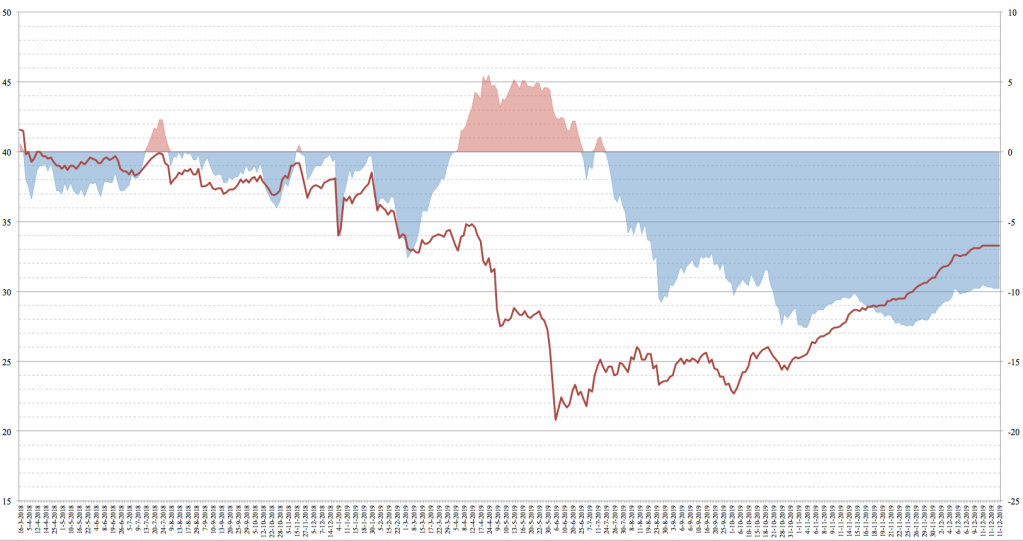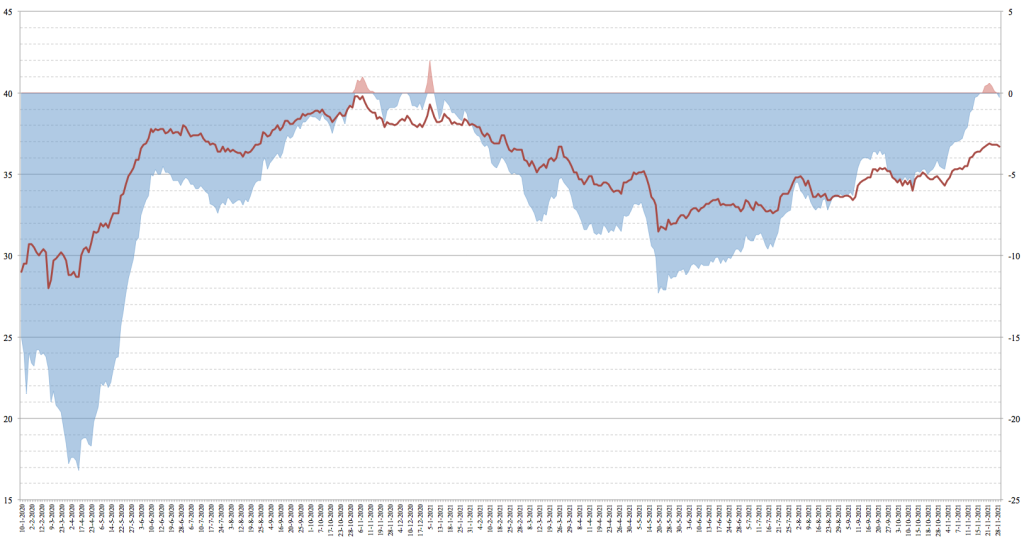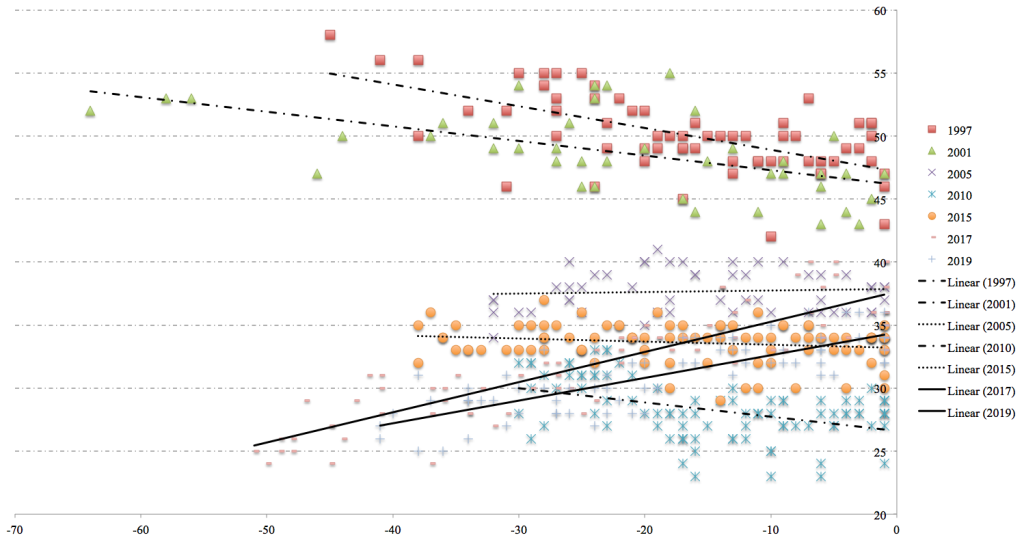It was announced the other day (22nd April) that the Solicitor-General would not be permitted to prosecute Trudi Warner for contempt of court, on the grounds that she had held up a placard outside a crown court where Insulate Britain protesters were on trial, reminding jurors that they had a right to acquit defendants on their conscience, i.e. to acquit despite the fact that the elements of an offence had been made out. You can find the full judgment, delivered by Mr Justice Saini, here; it’s good reading.
Before the judgment came out, Matthew Scott offered some thoughtful comments on the case in a post headed “I don’t stand with Trudi Warner”. Matthew argued that, while it was certainly a fact that juries sometimes decided cases on the basis of conscience and faced no adverse consequences for doing so, this did not amount to their having a right to do so. In this Matthew followed the case made on behalf of the Solicitor-General, which (quoting the skeleton argument) asserted that
[juries have] a de facto power to acquit a defendant regardless of judicial directions, because they cannot be directed to convict and they cannot be punished for acquitting on conscientious grounds, but they have no right to do so
In support of this argument, Matthew pointed out that juries can decide cases on the basis of a complete misreading of the law, and do so with impunity (as long as they haven’t told the judge of their reasoning beforehand) – and yet it would plainly be contempt of court to encourage them to do so. They can do it (power), but they shouldn’t (no right).
This is a difficult – even contradictory – area, but I’m afraid this reasoning just confuses things even more, tending as it does to reduce ‘right’ to a kind of legal garnish on top of a power to do something. A better approach is to go back to Wesley Hohfeld’s decomposition of the concept of ‘right’. Hohfeld argued that what we call legal rights come in many different varieties, but that all of them involve a relationship between two parties. Suppose, firstly, that you have a legal duty to somebody – your employer, say; in that situation it’s also true that your employer has a claim on you. It’s important to note, before going any further, that the claim and the duty aren’t two separate things which complement each other. Rather, they’re two perspectives on the same thing: if you have a legal duty to person X to do A (e.g. work 35 hours a week), it necessarily is the case that person X has a legal claim on you obliging you to do A; it’s not possible for a valid legal claim to cover a different scope from its corresponding legal duty, or vice versa. Outside of your specified duty, moreover, your employer has no right to demand that you also do B or C, e.g. give up smoking; this also means that you have a privilege, relative to your employer, of being under no obligation to do that thing.
All of these are, in effect, spun out from the concept of a claim: a “no right” is the absence of a claim, a privilege is the absence of a duty. All these relationships obtain between two parties, and they all relate to a particular area of activity; they’re all about saying that person Z is bound to do A or is not bound to do B, by virtue of their relationship with person Y. Sometimes what we call a ‘right’ is based on a claim (under the terms of our relationship with person A, we have a right to expect that they will do X); sometimes it’s based on a privilege (we have a right to do Y, irrespective of our relationship with person B).
That’s part 1 of Hohfeld’s table of rights, and you may be wondering what any of it’s got to do with juries. Not a great deal, I’m afraid, but it’s worth setting it out as background to part 2, which would otherwise seem impossibly abstract. The table needs a part 2 because the areas of activity regulated by law include the processes of law itself: we all have rights to associate freely and duties to pay taxes, but some people also have the duty to carry out community service or the right to charge another person with a crime. What is at issue here is not claims and duties per se, but the claim to change another person’s duties and privileges on one hand, and the duty to submit to this on the other. These second-level rights and duties don’t quite fit into the first half of the table.
To complete the picture, Hohfeld proposed that in some situations we have the power to alter another person’s legal position, their effective constellation of duties and privileges: examples would include a police officer placing someone under arrest or a jury (finally!) deciding that a person is guilty as charged. This power, viewed from the other end of the relationship, is a liability to have one’s legal position changed. As with claims and duties or no-rights and privileges, the power and the liability aren’t complementary but simply two views of the same thing: to say that a power exists is also to say that the corresponding liability exists, and vice versa. We can now complete the table by adding the two negative terms: the absence of a power – the lack of a power to alter someone’s legal position – is a disability, while the absence of a liability is an immunity.
It’s worth lingering over this last term briefly, as immunities are vitally important in putting Hohfeld’s schema to work. To say that we have an immunity is to say that we are in a relationship with another party, under the terms of which that party has no power to change our legal position (i.e. they have a disability). (All powers/liabilities, and hence all immunities/disabilities, have defined limits, so strictly speaking that sentence should read “…an immunity in a specific area … no power to change our legal position in that specific area (i.e. they have a disability relative to that specific area)”. But I thought the sentence was quite long enough as it was.) Look at it this way: if the party on whom you’re making a claim has the power to change the terms of your relationship, then they can change it such that you don’t have a claim on them any more. A claim backed by an immunity is a claim that the other party can’t, legally, refuse to honour.
Nearly there. I said above that what we call a ‘right’ is generally ‘based on’ a claim or a privilege. I can complete that statement now: what we call a ‘right’ is generally one of three things, consisting of a claim, a privilege or a power, combined in each case with an immunity. A right such as the right to vote or to receive free healthcare is a claim on other people (in these cases, on the government) together with an immunity – which is to say, a disability on the part of those other people: they cannot, legally, refuse to honour the claim. A right such as the right to assemble or to join a union is a privilege – the absence of any duty not to do those things – bundled together with an immunity, meaning that if you do do those things you won’t be penalised for it. Lastly, a police officer’s right to put you under arrest, or a jury’s right to send you to prison, is a power together with an immunity – which is to say, a disability on your part to change the terms of that relationship, such that you won’t be arrested or convicted.
Now, back to Trudi Warner and the information that she was providing to potential jurors. As we’ve seen, the Solicitor-General argued that juries have a ‘power’ to decide cases according to conscience but no ‘right’ to do so. I think we can do better than that. Translating the S.-G.’s argument into more consistently Hohfeldian terms, the case is, firstly, that juries have a power to decide a case according to conscience, and an immunity to being discharged or having their decision overruled in consequence; secondly, that they have very much the same power+immunity to decide a case purely on the basis of personal sympathies (or on any other basis, including tossing a coin); and, thirdly, that this is significantly different from having a “right” to do so.
Something has clearly gone wrong by the time we get to the third statement: if a jury has the legal power to decide in a certain way and legal immunity to having such decisions reversed, there’s no sense in law in which they don’t have the right to decide in that way. Judge Saini politely describes the Solicitor-General’s ‘power but no right’ formulation as ‘not ultimately helpful’. He goes on to say that what is at issue is
the tension between what is sometimes called “jury equity” (the power of the jury to give a verdict according to conscience), and the obligation of a jury to follow a judge’s directions on the law and abide by the juror’s oath/affirmation, which is to “faithfully try the defendant and deliver a true verdict according to the evidence”.
Equity was seen until relatively recently as existing alongside the courts (and indeed had courts of its own); this is where law gets squishy and malleable, with judges finding that a result for which the available laws give no support is nevertheless required in the interests of justice. For example, neither contract nor property law gives any direct support to an unmarried partner claiming part of the value of the couple’s home after a break-up, if there’s nothing on paper; equity may come to the rescue, subject to certain conditions (of which the most demanding, in practice, is probably being able to call on a lawyer). Jury equity is the same kind of thing: it justifies getting the right result in the wrong way.
Saini describes “jury equity” as “an established feature of our constitutional landscape” which “has been affirmed … in the highest courts”. He cites Lord Bingham’s categorical statement, in R v Ward [2005], that “[there are] no circumstances in which a judge is entitled to direct a jury to return a verdict of guilty”. And, if there are no such circumstances, it follows that a hypothetical situation in which there is no legal or factual dispute – the facts are uncontested, intention is admitted, the law is drafted such as to exclude any possible plea of ‘reasonable excuse’ – is also a situation in which the judge is not entitled to direct a guilty verdict. To say that juries can acquit on conscience is also to say that a judge cannot ‘go behind’ a jury’s decision to acquit and reject it if it does not appear to be made on valid grounds; by extension, juries can acquit for any reason whatsoever, good or bad. Saini quotes Lord Thomas in R v Goncalves [2011]: “a jury is entitled to acquit and its reasons for so doing are unknown. It is their right which cannot be questioned.”
At this point it may seem that Saini has proved too much: doesn’t this argument imply that the actions of an alternative Trudi Warner, who reminded jurors that they had the right to bring a verdict based on whether they like the defendant’s face, would also be covered by the umbrella of jury equity?
Saini rightly didn’t speculate on this hypothetical, but I think that conclusion isn’t necessary. Suppose that Judge Able is told by a spokesperson for the jury in her case that they intend to decide the case as a pure matter of conscience, as is their right. Later that day, Judge Baker bumps into a member of the jury in his case, who mentions that they haven’t really been paying attention but intend to acquit because the defendant “seems nice”. Two similar cases had concluded the previous day; by an extraordinary coincidence, Judge Clarence’s jury had also decided their case as a matter of conscience, while Judge Darrow’s jury had also based its decision on the defendant’s appearance. The difference between them and juries A and B is that juries C and D gave their verdict without having let the judge know what they’d been up to.
On these rather contrived facts, it seems to me that, firstly, there’s no significant difference between juries C and D, both of whom can go home and get on with their lives. “A jury is entitled to acquit and its reasons for so doing are unknown”; their verdicts stand and can’t now be overturned, and they will face no consequences for their unorthodox decision processes. As such, pace the Solicitor-General, they did in fact have a right to bring the verdicts on the basis that they did: they had the power to do it, they had an immunity to consequences for having done so, and a power and an immunity make a right.
But there’s an additional power/immunity pairing here. Back in the jury room, all four juries were directed by the judge to decide their case on the basis of the law and the evidence; all four of them had – and exercised – the power to decide the case on other grounds, tolerated as part of the justice system under the banner of “jury equity”. But, while there’s no difference between juries C and D, there is a significant difference between juries A and B, both of whom are (at the time of this thought-experiment) still in the process of deciding their case. Now that their – plainly defective and disrespectful – approach to the case has come to light, the members of jury B are liable to be discharged for abusing their position; jury A, on the other hand, hasn’t merited any more in the way of discipline than a restatement of the judge’s directions, probably followed by a resigned sigh.
Just as Jury A has, and C had, the power to decide the case on conscience, jury B has, and D had, the power to decide the case on frivolous grounds. The difference between juries A and B is that jury A has immunity to having that decision overruled, whereas jury B doesn’t – and neither would jury D have done, if what they did had become known. Usually, of course, how a jury decides a case never does become known, so the distinction between the right to decide the case (in whatever way) and the right to deliver a verdict (on whatever basis) is academic – but it is a real distinction.
Now, the information Trudi Warner was offering potential jurors was that they could decide the case based on conscience. Clearly there’s a general – albeit largely unpoliced – prohibition of deciding a case based on news coverage, rumour, hearsay, hunches, dice rolls etc, or for that matter on partial and slanted readings of the law: a jury who let it be known that that was how they were proceeding would at the very least be reprimanded by the judge, and actually encouraging a jury to do any of those things (or even reminding them of the possibility) would be a clear contempt. However, there’s a widespread and well-established understanding that conscience is different, and should be respected as a means for deciding a case. In current and established practice, any jury has both the power to decide a case on the basis of conscience and immunity to consequences for doing so; as such, they have the legal right to do so, even though it goes against the judge’s direct instructions.
What Trudi Warner did was remind them of this right, and that’s quite different from encouraging them to decide the case on other grounds. In the words of Judge Saini:
there is a tension which the law tolerates between the principle of jury equity and the duties in the oath and affirmation and obligation to follow judicial directions. … It is not unlawful to accurately communicate the bare principle of law to potential jurors in a public forum. (emphasis added)
It seems to me that that understanding – that toleration of jury equity – is what the Solicitor-General was attempting to challenge. I think it would have been a bad day for justice if the challenge had succeeded. We can be grateful to Mr Justice Saini for not allowing it to proceed.



